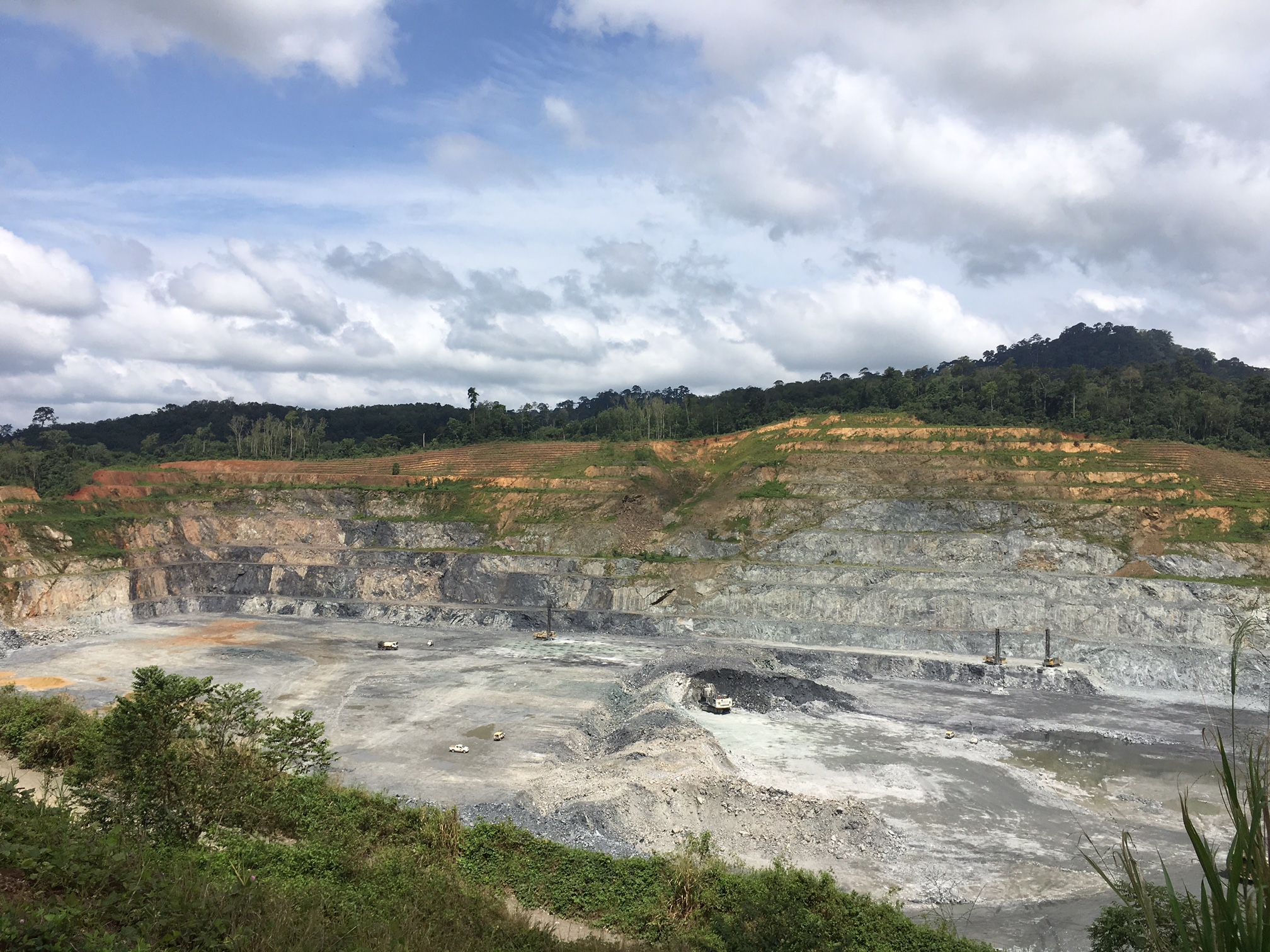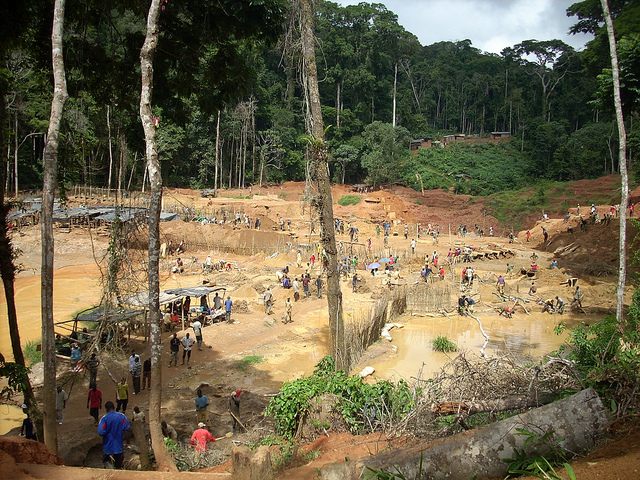forest-smart

Share
Forest-Smart Mining to Advance the New York Declaration on Forests and the Sustainable Development Goals
Forests are critical for sustainable development as they provide oxygen, significantly help curb climate change, are home to a majority of global biodiversity and provide livelihoods for nearly 2 billion people. But deforestation is accelerating.
It is estimated that mining accounts for up to 7% of forest loss in developing countries. “Forest-smart mining” will be needed to both minimize direct and indirect impacts of mining on forests and to pursue opportunities for positive forest outcomes. This will require public policies, corporate practices and multi-stakeholder partnerships to address economic, social, and governance drivers of deforestation through an integrated landscape-level approach.
This dynamic side-event will be an opportunity to raise awareness about the relationship between mining and deforestation, present new research findings on forest-smart mining, and provide an overview of the New York Declaration on Forests and its Global Platform. It will highlight examples of forest-smart policies, practices and partnerships and build a shared understanding of what changes, innovations, and new initiatives may be useful to accelerate action.
Side-Event at the UN General Assembly Tues. 25 September 2018 Scandinavia House: 58 Park Avenue, New York, NY 9:30am-11:30am
Find out more here.
Photo: Tom Maddox / Fauna & Flora International
For stories and updates on related activities, follow us on twitter and facebook , or subscribe to our mailing list for regular updates.
Last Updated : 06-16-2024
It’s time to get smart about sustainable forests. Here’s how.
It isn’t just our technology that cries out for “smart” solutions. The development challenges of an increasingly connected world demand ever more comprehensive answers – and forests are no exception. The risks to forested lands stem from multiple sources, from the development of mining and road infrastructure, to expanding agricultural production, to the growing demand for woodfuels. To address these challenges in a sustainable manner, we need to partner with leaders and stakeholders in other sectors to develop solutions that minimize or avoid damaging effects and enhance forests’ contribution to environmental, economic and social benefits. In short, we need solutions that are “forest-smart.”
To make these objectives a reality, PROFOR continues to develop a forest-smart approach that emphasizes the role of forests within a broader landscape, where changes in forest cover can have very real and wide-reaching impacts on people and their wellbeing. We are partnering with experts outside of the forestry realm, including mining, disaster risk management, energy and agriculture, to help turn these sectors into forest champions. PROFOR’s ultimate goal is to transform how other sectors operate by identifying opportunities for mutual benefit, and devising innovative solutions that benefit people and the environment, and can be carried out at a large scale.
For instance, green infrastructure like mangrove forests can act as a buffer against storms, flooding, and coastal erosion – and unlike traditional “gray infrastructure” like sea walls and levies, mangroves provide valuable fish habitats, which translates into benefits for fisheries, tourism and local jobs. In Jamaica, PROFOR-supported work on nature-based infrastructure is guiding national planning for managing risks from natural disasters.
The extractive industries are another area where we can get smarter. The footprint from mining operations and their related infrastructure (such as constructing roads and settlements) can be devastating to forests, biodiversity, and forest-dependent communities. However, an array of new tools has emerged on ways to minimize or offset these negative impacts. PROFOR’s forest-smart mining program is building understanding for how to apply these new practices across a range of different contexts.
Agriculture, too, presents forest-smart opportunities. PROFOR research highlighted the many benefits of growing trees on farms, including boosting productivity, supplementing household incomes, and sequestering greenhouse gases. Especially promising is the tremendous potential for applying these tree-based practices at the national level.
While all of PROFOR’s forest-smart programs have implications for reducing poverty, PROFOR has also identified ‘poverty’ as a core thematic concern when it comes to sustainable forests. While there is growing evidence on forests’ contribution to the livelihoods and subsistence of poor communities, much less is known about the extent to which forests can provide a pathway out of poverty. To help fill this knowledge gap and make the case for forests as tool against poverty, PROFOR is collaborating with an ongoing household survey initiative to collect nationally representative data. PROFOR is also strengthening its focus on gender, contributing to more inclusive projects that take into account the different ways in which men and women access, use, and manage forests.
In essence, forest-smart strategies deliver benefits for the climate as well as for development. These strategies are increasingly in demand as countries face multiple competing pressures on their resources and lands, and the magnitude of climate change risks become more and more apparent. To build the necessary resilience to face these challenges, we can’t afford to be anything less than forest-smart.
For stories and updates on related activities, follow us on twitter and facebook , or subscribe to our mailing list for regular updates.
Last Updated : 06-16-2024

Extractive Industries in Forest Landscapes: Balancing the Trade-offs and maximizing the benefits
CHALLENGE
About 3.5 billion people live in countries rich in oil, gas, or minerals. Many of these countries also suffer from poverty, corruption, and conflict stemming from weak governance. Nonrenewable mineral resources play a dominant role in 81 countries, which collectively account for a quarter of gross world product, half of the world’s population, and nearly 70 percent of those in extreme poverty. The World Bank Group’s involvement in extractive industries seeks to help countries seize the opportunities that mining companies offer for development, poverty reduction, and boosting shared prosperity. Most World Bank Group interventions in extractive industries are in the governance area, to encourage transparent management of industry revenues so that they provide benefits for local people and so that the industries themselves respect local community needs and the environment.
At the same time, more than one-quarter of the world’s active mines and exploration sites overlap with, or are situated within, a 10-kilometer radius of, a strictly protected area. Nearly one-third of all active mines and exploration sites are located within areas of intact ecosystems of high conservation value, most of them forests. Almost one-third of all active mines are located in stressed watersheds. Infrastructure developments associated with oil and mineral developments represent the most important threat to ecosystems through physical incursion into forests and disruption of the ecosystems. Road and railway development could be particularly harmful. Building a new road drives direct deforestation through tree cutting, but this impact is generally limited. Most importantly, roads are the major vehicle for forest degradation through further incursion into forest areas for agriculture, hunting, artisanal mining, and other potentially harmful activities. Added to that, a large-scale mine has considerable energy requirements, which will lead to the construction of hydropower dams, oil and gas pipelines, and power lines. Nevertheless, oil and mining companies can contribute considerably to sustainable forest management, and have done so in the past, by implementing measures for forest conservation and community development in and around their concessions.
There is increasing pressure on individual companies to implement standards to mitigate and offset negative environmental impacts. Yet there is a limit to what private-sector-driven, project-specific measures can do. These kinds of voluntary standards also tend not to affect artisanal and small-scale miners and other "rogue" players, who tend to have the largest environmental footprint. In order to address all players, an integrated landscape-level planning and enforcement process is needed.
APPROACH
This program will transform the way the World Bank Group works with its clients on extractive industries in forest-rich countries, so that oil, gas, and mineral extraction contribute to sustainable forest management and poverty reduction for the people depending on those forests. The program also introduces this knowledge to the Bank's vast networks of private companies and government partners.
Activities have been chosen based on the most urgent issues impacting the forest sector, and existing World Bank Group projects that have the potential for the greatest impact and replicability. Two major studies are underway, focused on Artisanal and Small-Scale Mining (ASM) and Large-Scale Mining (LSM), and how to make these sectors forest-smart.The lessons and recommendations will be based on both good and bad practices in different parts of the world, looking at a range of geographical, governance, and ecological factors. The two studies include analysis of the thematic areas and the identification of 15-20 case studies each, following a detailed analytical framework that was developed to support consistency and comparability.
RESULTS
This project has been completed. The outcomes were achieved, the development of tools and analysis around forest smart mining was largely successful. The development of an understanding related to what could be achieved in Artisanal and Small-Scale Mining (ASM) and Large Scale Mining (LSM) as well as biodiversity offsets were important accomplishments. The rich list of thematic case studies pulled together experiences from all over the world, highlighting good and bad practices on a continuum as well as making practical recommendations for dialogue with private sector stakeholders as well as with Governments. The three reports below identified the first known lessons learned for implementing a “forest-smart” approach to LSM and ASM:
- Forest-Smart Mining: Identifying Good and Bad Practices for Artisanal & Small-Scale Mining in Forest Landscapes
- Forest-Smart Mining: Identifying Factors Associated with the Impacts of Large-Scale Mining on Forests
- Forest-Smart Mining: Offsets case studies
Based on these reports, a series of 16 Principles have been identified that should guide a ‘forest smart’ policy framework for the mining sector. These have been integrated in an executive summary. Based on this, tools will also be developed for the relevant stakeholders.
The findings of the reports were presented at several high-level policy and industry events raising awareness within the mining industry on the impact of mining on deforestation and the possibilities to address the carbon footprint of mines by actively working on mitigating their forest footprint and striving for net gain of forest cover in and around their operations.
There is also a direct relevance of the work for World Bank investments, such as the Forest Investment Program (FIP). The results have also informed the preparation for additional funding in Ghana, the Zambia REDD+ Investment Plan, and a new mining operation in DRC.
The work has also been integrated in a larger project currently being developed by the World Bank Energy and Extractives practice, called ‘Climate Smart Mining’. This looks at the carbon footprint of mineral extraction for the minerals that are being used, at an increasing scale, for building clean-energy technologies. Being’ Forest Smart’, is addressed as one of the most effective tools for mining companies to address their carbon footprint.
For stories and updates on related activities, follow us on twitter and facebook , or subscribe to our mailing list for regular updates.
Last Updated : 06-15-2024








